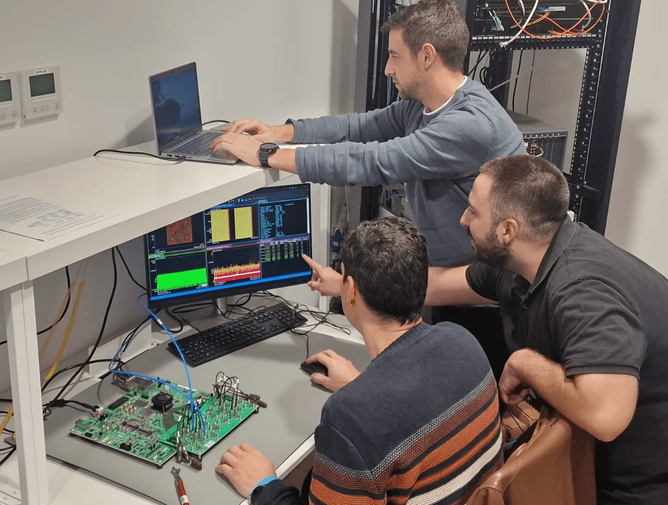Vodafone is collaborating with AMD to develop mobile base station silicon chip designs that will give 5G radios the power to meet customer demand for AI.
AI continues to surge across the mobile telecommunications sector, with customers seeking higher-capacity AI to make digital services faster and more reliable.
In response, Vodafone is partnering with leading semiconductor company AMD to support Vodafone’s aim to reduce radio antenna size, energy consumption and the number of base stations. This is all while continuing to give customers excellent coverage.
“Vodafone’s goal is to develop a robust chip ecosystem.” – Vodafone, via announcement.
Taking place at the Vodafone Innovation Centre in Málaga, Spain, engineers from both companies are testing radio hardware with AMD Zynq UltraScale+ RFSoC (Radio Frequency System-on-Chip) devices. This is a single-chip radio platform, which can be adapted to combine several radio features, including a set of Arm processors.
Supporting 5G and OpenRAN
The benefit of these integrated adaptive RFSoC devices is that they can house a radio receiver and are flexible enough to accommodate multiple frequencies.
Unlike existing devices such as Application Specific Integrated Circuits (ASIC), which are very efficient, but inflexible, Vodafone states the AMD Zynq UltraScale+ RFSoCs can be remotely modified after installation and custom designed for a particular set of radio configurations.

The goal is to enable Vodafone engineers to quickly support new 5G services, in addition to introducing the latest AI algorithms and industry standards. This will mean the telco can boost capacity during busy periods without having to rip out and replace existing hardware.
Likewise, the modular design of AMD adaptive SoCs also makes them suitable for Open Radio Access Networks (OpenRAN), which are constructed using a mix of hardware and software from different vendors.
In addition to assessing the performance and cost of new chipset designs, Vodafone engineers in Málaga are also evaluating the latest compatible radio units from multiple vendors.
“Vodafone’s goal is to develop a robust chip ecosystem by providing specifications and contributing towards the development of advanced algorithms that can power new energy-efficient and intelligent networks,” the telco said via its announcement.
Supporting the sustainable development of 5G
Most of the energy consumed by an operator’s network comes from the power amplification of radio signals sent to users. Using AMD chipsets is therefore pioneering for Vodafone, as the telco works on several energy-saving techniques to solidify its sustainability commitments.
Part of this includes reducing the level of signal distortion to enhance power amplification efficiency and testing its own 5G algorithms which can effectively control power consumption to match variations in customer demand.
The companies will use the AMD UltraScale+ Zynq RFSoC DFE ZCU670 Evaluation Kit and AMD Vitis™ Design software for development and out-of-box evaluation.
Semiconductor chips designed for telecom infrastructure are crucial for powering advanced 5G networks to handle AI workloads. In order to scale 5G networks to meet customer demand, telcos are turning to more advanced capabilities like AI to power the next generation of connectivity.
“AMD is playing an important role in the advancement of 5G networks by providing the essential software and hardware for testing new Open RAN radio units,” Vodafone says.
“By embedding advanced algorithms and technologies within its network, Vodafone can meet future demand and scale up new 5G features such as network slicing, which can give businesses, hospitals, or schools their own dedicated network with desired service level guarantees, along with added security.”



